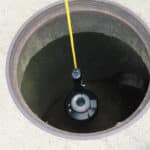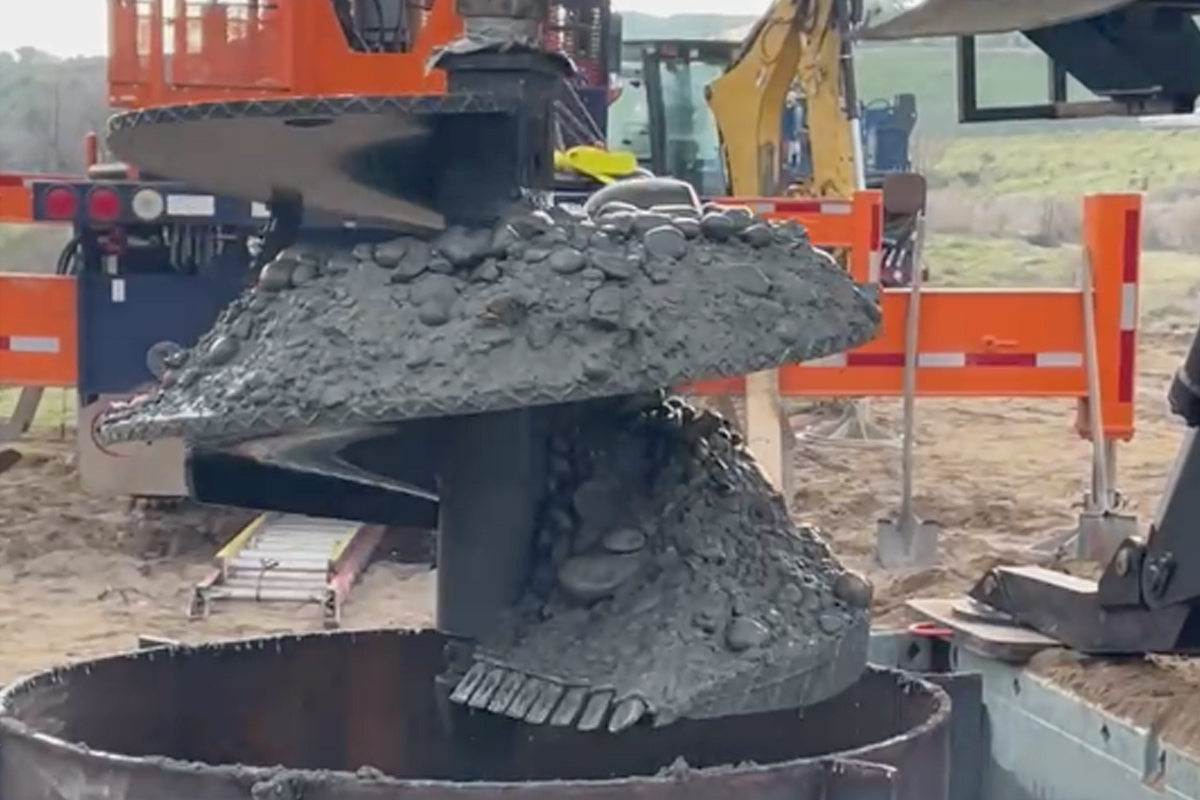
Aging Asbestos Cement Pipe Requires Assessment Before Replacement
Asbestos cement pipelines present unique and costly challenges for utilities that have these pipes in their drinking water network.
Utilities need to be cognizant of the lack capital funding to remove all AC pipe. They must also avoid pushing it to the point of failure and causing customer disruptions. Prioritization of pipeline renewal using current data (i.e., condition assessment data) is essential. This helps to keep replacement costs within accessible budgets while maintaining a desirable level of service.
Acoustic testing is one of the best ways to do this. It is non-invasive and non-intrusive and enables rapid inspection of large areas of a water distribution network. It achieves this without service interruptions, pipeline dewatering/cleaning, or costly excavations.
Asbestos Cement Use
Asbestos cement (AC) was a popular material choice for water, storm, and wastewater pipes installed in North America between the 1940s and 1960s. According to the most recent study on water main break rates by the University of Utah, AC is the most common pipe material in California and Nevada. Moreover, 41 percent of these AC pipes are more than 50 years old. This means hundreds of thousands of miles of AC pipes are reaching the end of their design lives. They are expected to need replacement in the next decade, and in many cases, there is no capital budget to match.
The University of Utah study indicates that AC pipes currently have one of the highest failure rates (along with cast iron). Therefore, it is critical that utilities have or develop a proactive pipe assessment and renewal plan. This plan should prioritize the repair and replacement of AC pipes within existing capital replacement budgets.
In this article, we will examine the compelling benefits of acoustic condition assessment. We will include applications in three utilities within the region (North Pacific West, Coastal West, and Southwestern).
How Does Acoustic Condition Assessment Work?
Some inspection approaches may only provide assessment of physical material thickness. Especially for AC, where the degradation mechanism often results in wall softening, not physical wall loss, these may not effectively identify the pipes in poorest conditions. Consequently, utilities using these methods may replace pipelines that have years or more of remaining service life. They may leave pipes verging on failure in the ground.
Acoustic technology for condition assessment is a tried-and-true way of measuring current structural integrity of buried watermains. This is in addition to detecting leaks without requiring anything to be inserted into the water column or disrupting service to customers.
At the Forefront
Echologics has been at the forefront of this testing for over a decade. Its ePulse condition assessment service has more than 190 validations to date and 45-plus validations on AC specifically. This technology uses acoustic wave propagation to identify sections of pipelines with reduced structural stiffness. It estimates the average remaining structural strength or effective wall thickness of a pipeline.
By inducing low-frequency acoustic waves inside pipelines, the technology measures the velocity of sound waves using sophisticated acoustic sensors. These sensors are connected externally to the pipe or appurtenances. The acoustic waves cause the pipe wall to “flex” at a microscopic level, affecting the speed of the soundwave through the pipeline. Along with other measurements, this provides field data that is then analyzed by in-house experts to provide the average remaining structural stiffness result. The final deliverables from an ePulse project include any existing leaks or points of interest in the project scope area, percentage wall loss of each pipe tested, and qualitative measurements of good, average, or poor. If sufficient information is available on the originally installed pipe, an estimated remaining service life can be included as part of the final deliverable.
The bottom line is acoustic condition assessment delivers a high level of accuracy. It is coupled with identification of any leaks present at the time of the survey. This allows utilities to prioritize the replacement or repair of the most crucial watermains first. It does so at a fraction of the cost of alternative assessments or replacement.
Examples from the Field
For more than 15 years, utilities have been using ePulse condition assessment technology to address the removal of legacy AC pipes. Below are some of their stories:
Fountain Valley, California
Fountain Valley’s (City) water supply is a blend of groundwater from six city wells and one imported water connection. This originating from Northern California and the Colorado River by the Municipal Water District of Orange County (MWDOC) via MWDSC. The City owns and operates two 5-million-gallon reservoirs, 202 miles of distribution piping, and 17,131 service connections.
The City wanted hard evidence on the pipe condition in four key areas. This was so it could integrate the condition assessment data into its existing asset management program to improve decision-making. The City has completed a five-year survey with 73 miles of pipe. This includes 6- to 10-in. diameter AC distribution mains to support replacement and renewal decisions.
Tacoma, Washington
Tacoma provides direct potable water service to more than 300,000 people through Pierce and King counties across 1,428 miles of watermains. To ensure efficient spending of replacement capital budgets, Tacoma embarked on a four-year condition assessment program. It aimed to obtain accurate and current data on their pipelines.
The City’s pipe breakage rate and water loss rate are very low for a large utility. Hence, they typically use age as the deciding factor on replacement and even then, usually only in conjunction with road projects. Using the ePulse technology, Tacoma was able to halve its main replacement budget with more accurate data. They also ensured that critical pipes were replaced in priority while mains with additional life were left in the ground.
Sammamish Plateau Water, Washington
Sammamish Plateau Water serves an area of 29 sq miles across the cities of Sammamish, Issaquah, and areas of unincorporated King County. They provide clean, reliable drinking water to more than 66,000 residents.
After observing the successful use of ePulse in the Seattle metro area (Tacoma and Bellevue), Sammamish Plateau Water is taking steps towards implementing the technology. Following their initial pilot in 2024 testing 1.5 miles of AC pipes ranging from 4 to 12 in. in diameter, the utility is moving forward with plans to establish an annual condition assessment program. This will drive data informed renewal decisions within their network.
Leaving a Legacy
These are just some of the North Pacific West, Coastal West, and Southwestern region utilities that are using evidence-based condition assessment data. This supports a proactive asset management plan. It can prevent premature replacement of water mains by distinguishing AC pipes that are merely old, from those that are truly impaired. This allows asset managers to prioritize limited renewal budgets to the assets that require it the most. It also helps keep good pipe in service longer.
Utilities may also consider pipe rehabilitation as an option to reduce costs associated with water main replacement and prolong useful life. However, ultimately AC is a legacy pipe that is being replaced with new and better materials. ePulse offers a cost-effective solution for understanding current condition. This helps make informed decisions on when rehabilitation or replacement is truly required.
Laura Dority is central regional manager for Mueller Water Products.
Latest Posts
- 92-in. Stormwater Pipeline CIPP Rehab in Englewood, Colorado
- The Human Edge in an AI World: Why Skilled HDD Crews Still Reign Supreme
- Geotechnical Considerations for HDD to Mitigate Risk
- Understanding Manhole Inspections and Their Role in Infrastructure Management
- Product Showcase – VMT Launches TunnelHub
Next Up
HDD Academy | February 19-20, 2026 | Scottsdale, Arizona | Learn more









